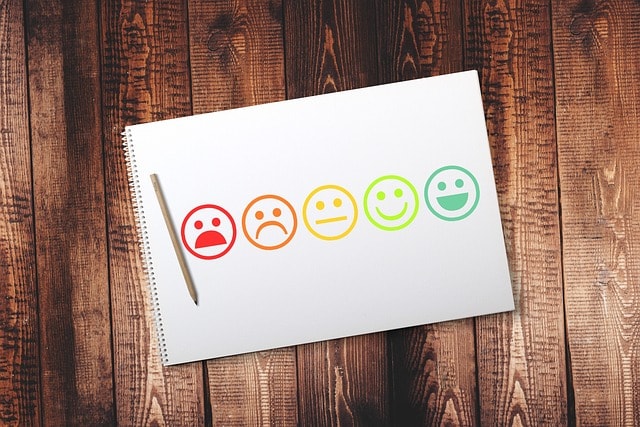Surveys are powerful tools in market research, customer feedback, and understanding target audiences. However, the effectiveness of a survey is often judged by one key metric: the response rate. Knowing what is a good response rate for a survey is critical to ensure that the data gathered is representative of the target population and useful for making informed decisions.
Survey response rates can vary widely depending on several factors, including survey type, distribution channel, survey length, and the nature of the audience. In this article, we will explore the concept of a good survey response rate, how to calculate it, and the factors that influence it.
Whether you’re dealing with email surveys, online surveys, or in-person surveys, understanding the dynamics of response rates will help you achieve more reliable and actionable results.
What is a Good Response Rate for a Survey?
The average survey response rate varies depending on the type of survey and the target audience. For instance, email surveys tend to have lower response rates compared to in-person surveys. The acceptable survey response rate typically falls between 10% and 30% for most online surveys. However, certain surveys, like internal employee feedback surveys or customer feedback surveys after a purchase, may see higher response rates because the respondents have a vested interest in the outcome.

An acceptable response rate for most external surveys can be around 20%. In market research, a good survey response rate often hovers between 15% to 30%, but anything higher than 50% is generally considered excellent. Keep in mind that response rates are not just about getting a high number of completed responses, but ensuring that those responses come from a representative sample of the population.
Calculating Survey Response Rate
To calculate the survey response rate, use the formula:
Response Rate=(Number of Completed ResponsesTotal Number of People Invited to the Survey)×100\text{Response Rate} = \left(\frac{\text{Number of Completed Responses}}{\text{Total Number of People Invited to the Survey}}\right) \times 100Response Rate=(Total Number of People Invited to the SurveyNumber of Completed Responses)×100
For example, if you invited 1,000 people to participate in your survey and received 200 completed responses, your response rate would be 20%.
Calculating the response rate helps in understanding how well your survey performed. It’s important to compare your results to average survey response rates within your industry or for similar surveys to determine whether your response rate is within an acceptable range.
Factors Affecting Survey Response Rates
Several factors influence survey response rates.

Knowing these factors allows you to make strategic adjustments to improve your survey’s effectiveness.
- Survey Length: Shorter surveys generally yield higher response rates. Time-consuming surveys may discourage respondents from completing them. Strive to make your surveys concise while still gathering the necessary information.
- Survey Type: In-person surveys often have the highest response rates due to the direct interaction between the researcher and respondent. Online surveys, while convenient and scalable, tend to have lower response rates because respondents can easily ignore or overlook them. Transactional surveys, which are typically short and conducted immediately after a transaction, can achieve higher completion rates because they are relevant and timely.
- Survey Incentives: Offering incentives like discounts, gift cards, or sweepstakes entries can significantly boost response rates. Incentives give respondents a tangible reason to complete the survey, which can help combat non-response bias.
- Target Audience: The right audience plays a crucial role in determining response rates. A well-targeted survey sent to an engaged audience is more likely to receive a good response rate than one sent to a disinterested or misaligned population.
- Survey Distribution Channel: The method by which you distribute your survey can significantly impact the response rate. Email surveys are a popular choice, but if your emails are getting lost in spam folders, your response rate will suffer. Mobile-friendly surveys tend to receive higher response rates, as more people are completing surveys on mobile devices.
- Survey Design: A well-designed survey that is visually appealing, easy to navigate, and mobile-optimized can increase your survey completion rate. If your survey is mobile-friendly, it will be accessible to a larger number of people, leading to a potentially higher response rate.
- Follow-up Emails: Sending a follow-up email can significantly increase your survey response rate. Sometimes, people simply forget to complete the survey, and a polite reminder can encourage them to participate. However, be mindful of the number of follow-ups you send, as too many emails can lead to frustration and disengagement.
- Survey Topic: If your survey topic resonates with the respondents, you’re more likely to achieve a higher response rate. Ensure that the subject matter is relevant and interesting to your audience. Surveys related to customer feedback and personal experiences often perform better than generic or broad surveys.
How Many Survey Responses Are Enough?
One of the most common questions researchers ask is, “How many responses do I need for my survey?” The answer depends on your target population, desired margin of error, and confidence level.

In general, a random sample of 100 to 400 respondents is often sufficient for most surveys to be statistically valid. However, the larger your sample size, the more reliable your data will be.
To determine how many survey responses you need, you can use a sample size calculator, which takes into account your population size, desired margin of error, and confidence level. For example, if you’re surveying a population of 10,000 people and want a margin of error of 5% with a confidence level of 95%, you would need about 370 completed responses to achieve statistically significant results.
Overcoming Low Response Rates for Good Survey Response Rate
Low response rates can be frustrating, especially if you’ve put a lot of effort into designing your survey and targeting the right audience.

Here are some strategies to increase survey response rates:
Offer Incentives
As mentioned earlier, providing a reward for completing the survey can boost response rates. Choose incentives that are valuable to your audience, such as discounts, gift cards, or exclusive content.
Make the Survey Short
Shorter surveys are more likely to be completed. Try to limit your survey to 5-10 minutes, as longer surveys can lead to respondent fatigue and drop-offs.
Improve Survey Design
A visually appealing and easy-to-navigate survey can help keep respondents engaged. Ensure your survey is accessible on both desktop and mobile devices to reach a broader audience.
Send Reminders
A well-timed follow-up email can significantly increase response rates. Consider sending a reminder a few days after the initial survey invitation, and possibly a second reminder a week later.
Choose the Right Distribution Channel
Ensure your survey reaches your target audience through the appropriate channels. If email surveys are not yielding the desired results, consider distributing your survey through social media, SMS, or even in-person surveys.
Personalize the Survey Invitation
Personalizing your survey invitation can make respondents feel valued and increase their likelihood of completing the survey. Address respondents by name, explain the purpose of the survey, and highlight how their feedback will make a difference.
The Impact of Non-Response Bias
Non-response bias occurs when the individuals who do not respond to the survey differ significantly from those who do. This can skew your results and lead to inaccurate conclusions. For example, if younger respondents are less likely to complete the survey, your data may not accurately represent the opinions of the younger population.
To mitigate non-response bias, try to identify any patterns in your non-responders and adjust your survey strategy accordingly. You might need to segment your audience, offer additional incentives, or change your distribution method to ensure a more representative sample.
Myth Busting: Common Misconceptions About Survey Response Rates
Surveys are essential tools for gathering insights, but there are several misconceptions about what constitutes a good response rate, how surveys should be designed, and what factors impact the success of a survey.

In this Myth Busting segment, we will address five common myths related to survey response rates and clarify the facts to help you achieve more reliable and accurate survey results.
Myth 1: “The Higher the Response Rate, the Better the Survey Results”
It’s easy to assume that achieving a high response rate is the ultimate goal. However, while a higher response rate can be beneficial, it’s not the only important factor. What matters more is the quality and representativeness of the survey sample.
If your respondents do not represent the broader population you’re studying, even a high response rate won’t provide meaningful insights. Additionally, focusing solely on low response rates can distract from other important factors like sampling bias, survey design, and targeting the right audience. Therefore, while increasing response rates is desirable, ensuring that your survey sample is representative is equally crucial.
Myth 2: “All Surveys Should Aim for a 100% Response Rate”
While it may sound ideal to aim for a 100% response rate, this expectation is unrealistic and unnecessary. The general rule is to strive for an acceptable response rate, which varies by survey type and target audience.
For example, in-person surveys often achieve higher response rates than online surveys, but this does not mean that online surveys with lower response rates are ineffective.

Online survey response rates typically range from 10% to 30%, and a response rate within this range is often considered satisfactory, especially when the survey sample is carefully selected and managed.
Therefore, the focus should be on achieving a response rate that ensures the data is reliable and actionable rather than obsessing over unattainable response rates.
Myth 3: “Longer Surveys Yield More Comprehensive Data than Average Response Rate”
It’s a common belief that longer surveys lead to more comprehensive data, but this isn’t always true. In reality, longer surveys can discourage participation, leading to incomplete or abandoned surveys. Survey respondents often have limited time and patience, so survey questions should be concise and relevant.
When survey length becomes a burden, it can negatively affect the completed surveys rate, particularly for online surveys.

Surveys that are short and focused tend to perform better in terms of completion rates, and a concise survey can often collect the necessary data without overwhelming respondents.
Remember, a shorter, well-targeted survey with higher completion rates can have a more significant impact than a longer survey with a low response rate.
Myth 4: “You Only Need a Few Responses to Get Accurate Results”
One of the biggest misconceptions is that a small number of responses is sufficient for accurate results. While it’s true that you can gain insights from even a small survey sample size, the reliability of your data improves with more responses.

The number of completed surveys affects the sampling bias and the statistical validity of your survey. To ensure your results are accurate, you need a sample size that is proportionate to your target population. For example, surveys with a small sample size may lead to skewed results, as they may not accurately reflect the opinions of the broader group.
Therefore, to get valid and actionable data, it’s important to gather enough responses to create a survey sample that is representative of your entire population.
Myth 5: “Online Surveys are Less Effective Than In-Person Surveys”
While it’s true that in-person surveys often have higher response rates, online surveys can be just as effective when properly designed and targeted. The key difference lies in the different factors that affect each type of survey. For example, online survey response rates are influenced by things like the platform used, the survey design, and how well it’s tailored to mobile devices.
When survey respondents can complete the survey easily on their mobile devices, response rates can significantly improve. Additionally, online surveys offer the advantage of scalability, making it easier to reach a larger and more diverse audience.
By optimizing for these important factors, you can achieve acceptable response rates in online surveys that provide valuable and accurate data.

Understanding these common myths can help improve your approach to surveys and ensure that your survey sample size and response rates are aligned with your goals. Achieving acceptable response rates is not just about increasing numbers; it’s about making sure that your survey respondents are representative and that your survey is well-designed and targeted to your audience.
By focusing on the quality of your survey, rather than just the quantity of responses, you’ll be able to generate more meaningful insights that have a significant impact on your research or business decisions.
Expert Comment by Dr. Sarah Reynolds, PhD in Survey Methodology and Market Research Expert
“Achieving a high average response rate is essential for ensuring the validity of survey data, but it’s equally important to focus on the methodology behind your surveys. When you calculate survey response rate, consider not just the numbers, but also how your survey compared to industry benchmarks for your specific audience.
For instance, while an in-person survey might yield a higher response rate due to direct engagement, online surveys can reach a wider audience with the right design and incentives. Balancing these factors is crucial for obtaining reliable insights that truly represent your target population.”
Conclusion
Understanding what is a good response rate for a survey is crucial to the success of any survey research project. While average response rates vary depending on factors like survey type, target audience, and distribution method, aiming for an acceptable response rate that is both representative and statistically valid should be the goal.
By focusing on survey design, offering incentives, and targeting the right audience, you can achieve a good survey response rate that yields meaningful and actionable insights.
In summary, while a response rate of 20% might be acceptable in many cases, strive for higher response rates by optimizing your survey approach. Remember, a higher response rate leads to more accurate and reliable survey results, which are essential for making informed business decisions and conducting successful research projects.

Comments are closed